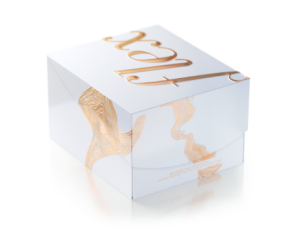Menstrual and vaginal health has been no stranger to innovation, especially when it comes to technology. For years, technology has played a major role in the health, wellness and pleasure of female reproductive anatomy. Many of these innovations have made the lives women (and men) better. The Memo highlights some of the greatest technological advances thus far. From sex toys to smart diaphragms and menstrual cups, the vagina, as an economic opportunity, has certainly gotten its share of attention in recent years. Below are just a few of the many innovations making headlines this year.
Menstrual pain, meet your match: Cannabis
One of the more controversial innovations gaining popularity this year for sexual and reproductive health is cannabis infused pain relief products. Cannabis infused salt baths, rubs, lubricants, tinctures and suppositories are said to directly relax the nerves and muscles affected by period cramps as well as alleviate symptoms of PMS. Celebrity, Whoopi Goldberg suffered from painful periods and as a regular cannabis user, knew the pain relief it could offer women. She teamed up with an herbalist to create a unique line of products not only infused with cannabis, but also herbs that for centuries have been used to treat menstrual pain and irregularities.
Both Foria Pleasure and Whoopi & Maya are committed to helping women find a more natural way to care for period pain through unique product lines available to select States. While there is a limit on distribution, Whoopi hopes to expand her product line into Canada, if, and when, proposed legislation to legalize marijuana is passed.
 Menstrual Discs: A new category in femhy
Menstrual Discs: A new category in femhy
While not a new concept, the makers behind Flex, a tampon alternative, similar to SoftCup, made headlines when CEO Lauren Schulte raised one million dollars to fund her company and production of the product. The menstrual disc can be purchased online via a subscription service and can be worn for up to 12 hours and also during sex. Unlike other products on the market, Flex’s patented material make-up, warms to the body, helping to alleviate cramps. A recent feature by Forbes attributes the success of Flex to its women-centered approach and leadership within feminine hygiene. But, women-centered innovation and leadership within femhy have been around for almost 20 years with companies like Lunapads, Diva International Inc. and Lunette spearheading a menstrual revolution with products made by women for women. Perhaps Schulte’s success has more to do with the revolution around period care and open dialog set in place by a number of female led companies before her, and less to do with the product itself. Not surprisingly, Flex sprung up from Silicon Valley, via investors, and has acquired its main competitor, SoftCup, positioning Flex to hold a good portion of market share.
Menstrual Apps: Can an app lead to earlier diagnosis of endometriosis?
For women suffering with symptoms of endometriosis, the mobile app Flutter hopes to empower women with knowledge of their reproductive health, while also acting as a screening process for common diseases like endometriosis. Kristy Curry designed the app in an effort to decrease the diagnosis time of endometriosis. The app will let women know the signs to look for, helping them seek medical attention sooner. While the app may be successful in identifying a potential health concern, the question remains: will doctors accept the app’s stored data as enough proof to further investigate the symptoms?
Innovation is exciting. It allows for new experiences, insights and education. Keeping in mind the challenge of change and acceptance that comes with anything new is important, especially in relation to women’s health. As menstrual health continues to make its way into the popular press, who knows “what period health will look like in the future.”

